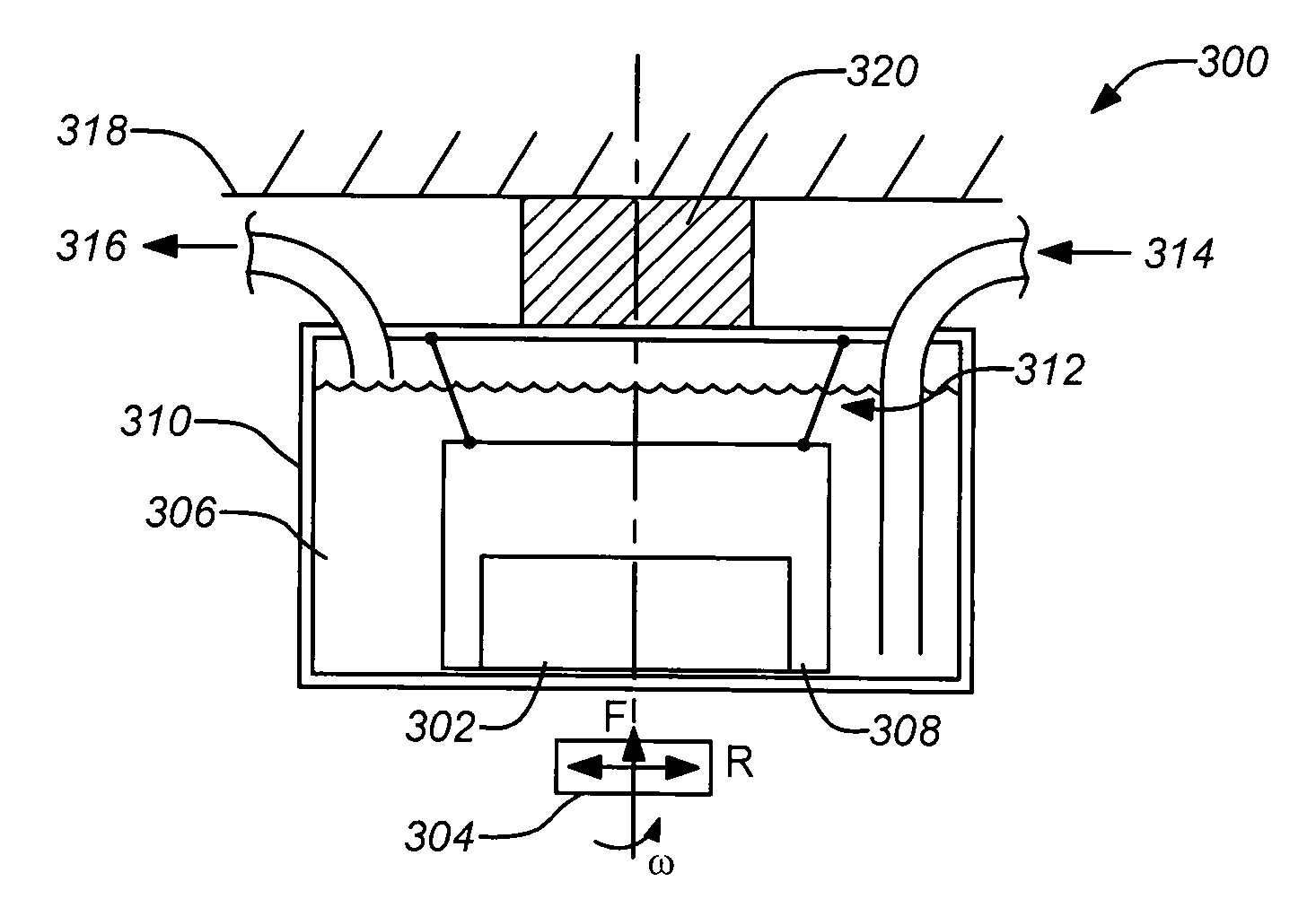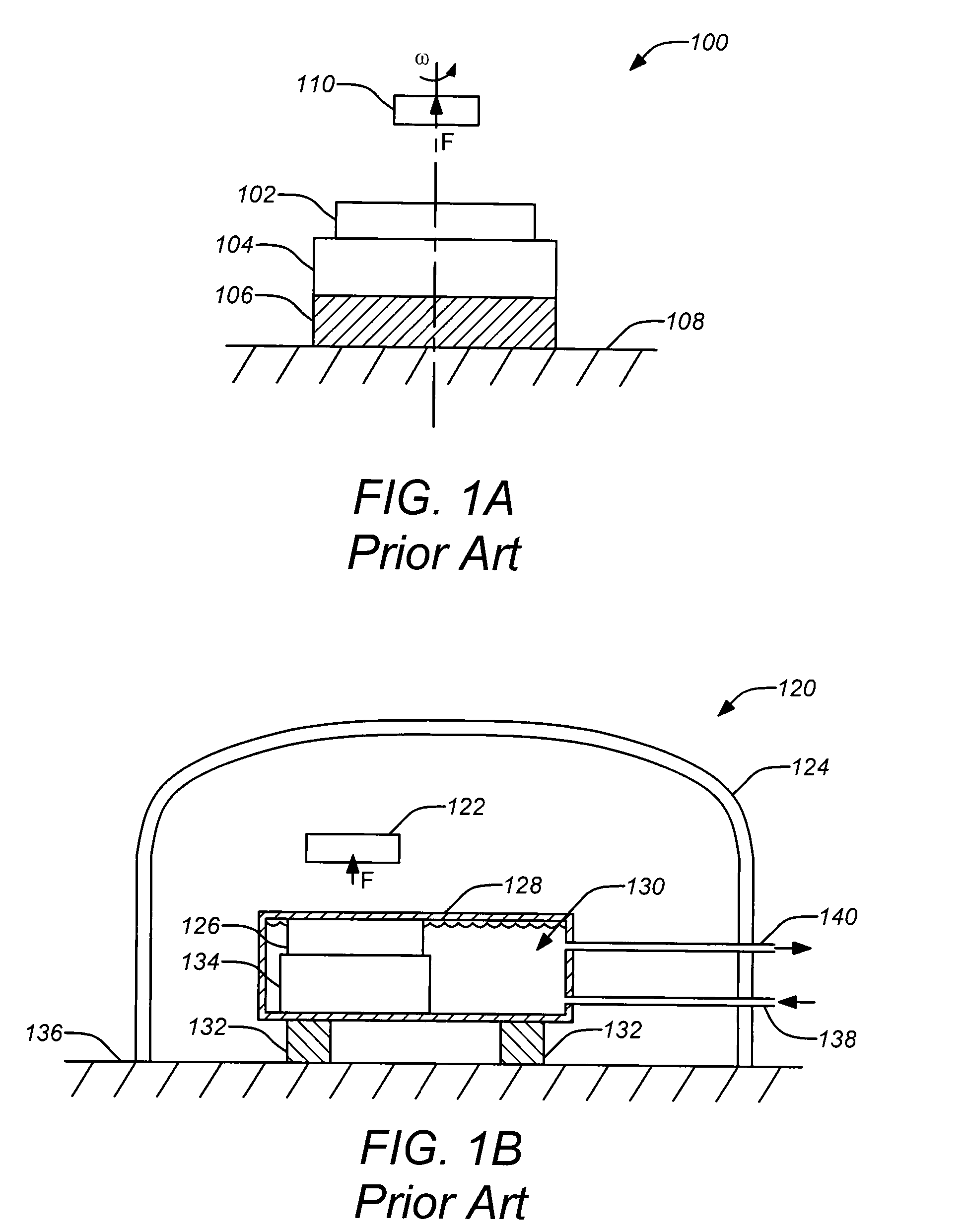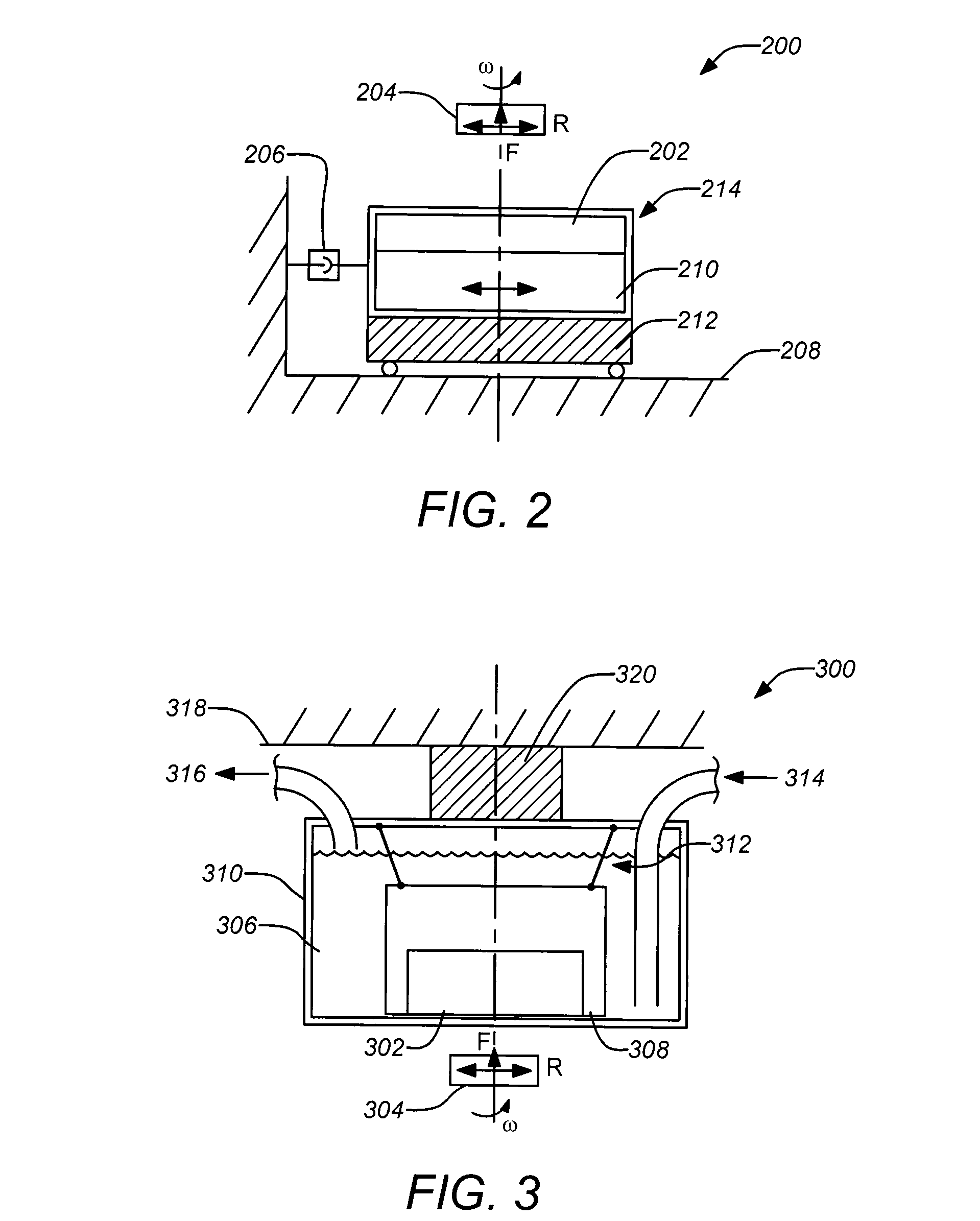Damping in high-temperature superconducting levitation systems
a superconducting bearing and high-temperature technology, applied in the direction of superconducting magnets/coils, bearing cooling, magnetic bodies, etc., can solve the problems of ineffective damping of inherently low damping of bearings, and system failure to damp small amplitude oscillations and whirls of levitation rotors, etc., to achieve improved damping
- Summary
- Abstract
- Description
- Claims
- Application Information
AI Technical Summary
Benefits of technology
Problems solved by technology
Method used
Image
Examples
Embodiment Construction
1. Overview
[0031]As previously mentioned, embodiments of the invention can provide damping to a levitated object, and in particular, to a levitated rotating object without affecting the rotational loss. For the case of the superconducting bearing, a typical embodiment of the invention can include a permanent magnet (PM) rotor and a superconductor (SC) stator. In some embodiments, the rotor may rotate in a vacuum. Although embodiments of the invention are described with regard to a superconducting bearing and magnetic rotor, it should be noted that embodiments of the invention may be applied in general to any levitation system employing a superconductor as will be understood by those skilled in the art. Typically, the permanent magnet rotor may be disposed above the superconductor stator, but other configurations are also possible as will be understood by those skilled in the art. Further, the permanent magnet may be coupled to other components to form the complete rotor that is levi...
PUM
| Property | Measurement | Unit |
|---|---|---|
| mass | aaaaa | aaaaa |
| magnetic field | aaaaa | aaaaa |
| frequency | aaaaa | aaaaa |
Abstract
Description
Claims
Application Information
 Login to View More
Login to View More - R&D
- Intellectual Property
- Life Sciences
- Materials
- Tech Scout
- Unparalleled Data Quality
- Higher Quality Content
- 60% Fewer Hallucinations
Browse by: Latest US Patents, China's latest patents, Technical Efficacy Thesaurus, Application Domain, Technology Topic, Popular Technical Reports.
© 2025 PatSnap. All rights reserved.Legal|Privacy policy|Modern Slavery Act Transparency Statement|Sitemap|About US| Contact US: help@patsnap.com



